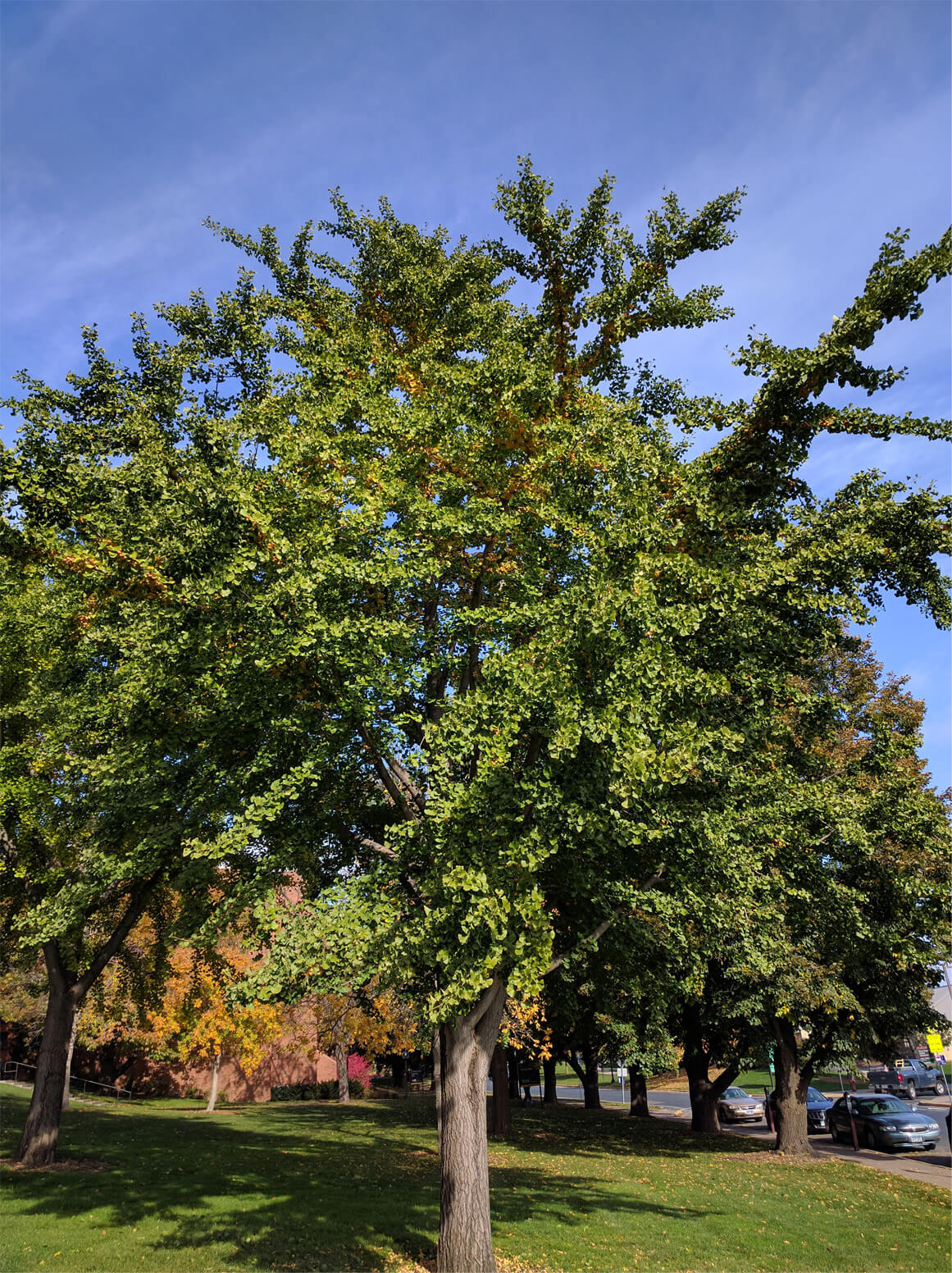Ginkgo
Ginkgo biloba
Overview
The Ginkgo tree, originally native to China, is a large and robust tree that is commonly planted for it fan-shaped, beautiful leaves. The 2-3 inch long leaves will turn yellow in the fall before falling off of the tree. The male version of the tree is the only one that should be purchased, as the female version produces soft fruit that can be messy and have a potent odor when broken.
Cultivation
The combination of the Ginkgo tree's slow growth rate and hardiness allow for the tree to live for very long times, some even claim over 3000 years. These trees preferably live in moist, well-drained soil and have full sunlight exposure, but can tolerate alkaline soil, clay soil, dry sites, occasional drought, and road salts.
Biodiversity Sustained
The Ginkgo tree can support multiple generations of smalls mammals, birds, and other critters due to it massive size and age limit. It is unable to be consumed by animals though, as the nuts produced on the female version of the tree are toxic when ingested.
